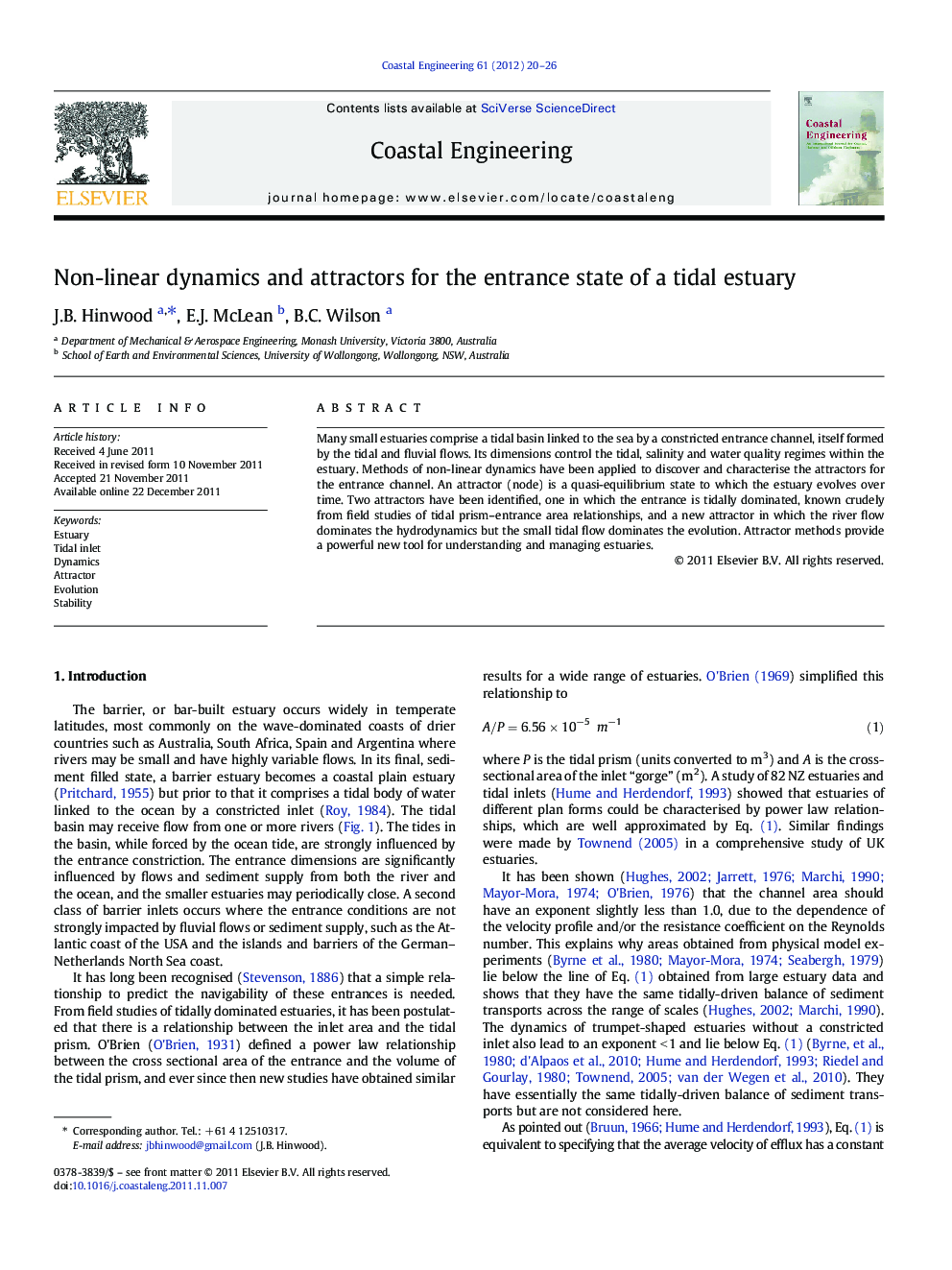| Article ID | Journal | Published Year | Pages | File Type |
|---|---|---|---|---|
| 1720994 | Coastal Engineering | 2012 | 7 Pages |
Many small estuaries comprise a tidal basin linked to the sea by a constricted entrance channel, itself formed by the tidal and fluvial flows. Its dimensions control the tidal, salinity and water quality regimes within the estuary. Methods of non-linear dynamics have been applied to discover and characterise the attractors for the entrance channel. An attractor (node) is a quasi-equilibrium state to which the estuary evolves over time. Two attractors have been identified, one in which the entrance is tidally dominated, known crudely from field studies of tidal prism–entrance area relationships, and a new attractor in which the river flow dominates the hydrodynamics but the small tidal flow dominates the evolution. Attractor methods provide a powerful new tool for understanding and managing estuaries.
► The long-term evolution of an estuary was simulated with a simple dynamic model. ► Two final states were found, these are attractors for this dynamic system. ► The tidal attractor is the known O'Brien inlet area–tidal prism relationship. ► The newly-identified attractor is river-controlled with important tidal action.
